The (Catch and Release) Tools of the Trade: Muskies 101
The (Catch and Release) Tools of the Trade: Muskies 101
By: Logan E
15 Minute Read
To anyone who knows me it is no secret that I love to target muskies! Muskies are a unique angling target for a lot of reasons, be it their propensity to follow a bait right to the boat or shore, their complete disregard for people and watercraft that would cause other species to flee, their unique appearance and patterns, or their capacity to get gargantuan in a freshwater environment.
One of their most defining characteristics is their absolute vulnerability. For a fish that can get to 60"/lbs, that has hundreds of teeth and a ferocity unrivaled they are incredibly delicate. Muskie are not well adapted to high concentrations of lactic acid (glucose is broken down into this acid during exercise or exertion). A prolonged fight with a muskie can leave them vulnerable to post-release mortality and this is the reason why proper tools and practices are so important. Muskies are also poor spawners, low-density fish, and are long-lived; they are vulnerable to over-fishing and can easily be extirpated from an area; I cannot emphasize good handling practices enough to new muskie anglers. For anyone looking to enter the realm of muskies or for seasoned Anglers these practices are vital for ensuring more muskies, and bigger muskies are swimming in our waters.
I'm definitely not an expert muskie fishermen, but I've adapted my approaches and methods over the last half decade targeting muskies and after several recaptures I am confident in my fish handling tactics; none of these tools or strategies are ground-breaking and I owe all of this knowledge to members of the muskie community that took the time to impart it upon me.
The catch and release tools of the trade include:
A large rubber mesh net-
A net acts as a live-well for a muskie. As discussed earlier muskies respond poorly to lactic acid, further stress from prolonged handling and extended time out of the water will compound their risk for death after release. For this reason, a large net is paramount to ensure a large muskie is comfortably submerged underwater while an angler prepares their release tools and camera equipment.
Important elements when looking for a muskie net include a rubber-lined mesh. This rubberized mesh is important because it removes less of the slime coat off of the fish compared to a nylon net; the slime coat is an important protectant layer that wards off parasites and infections. The dimensions of the net are equally as important because a large diameter bag and deep net ensure the muskie is not contorted and can comfortably sit below the waterline.
I have two nets that I utilize for muskies, an RS nets mag muskie model which is an absolute behemoth of a net, I am confident that I could use it to catch a shark if needed (only slightly kidding).
My other net is a smaller lucky strike net that serves as my canoe/back lake net. It would not be ideal for trophy waters, but is adequate on some back lakes I fish where the muskies max out around the 34-38" mark. In my canoe it is much easier to solo-net a muskie utilizing a smaller model of net.
 |
| RS Nets Mag Muskie Model and Lucky Strike 26x32" net |
A long pair of pliers-
It's not a secret that muskies have hundreds of teeth, they also have deep mouths, and anti-coagulant on their tongue, teeth, and gillplates that will cause hours of bleeding. So long pliers not only become a release tool for the fish, but an insurance policy for the angler to avoid long-bleeding wounds on their hands. Long pliers are necessary to remove hooks.
A hook-out tool-
A hook out is very useful because it is able to lock onto the shank of a hook and apply forward pressure. This helps to expedite removal of hooks that are deeply embedded far into the muskie's mouth or gullet.
Hook cutters-
Hook cutters are important for muskies hooked near vulnerable areas including their eyes, gills, gillplate, tongue, or gullet. Sometimes removing a hook can cause immense bleeding and it becomes a best practice to simply cut the hook shank and leave the partial hook in the fish. The enzymes in the mouth of the fish and the water will corrode the hook fragment.
Jaw spreaders-
Jaw spreaders are necessary to open the mouth of some lock-jawed muskies. Sometimes a muskie will refuse to cooperate with lure removal by snapping their mouth shut, and this is where a robust pair of Jaw spreaders becomes a vital tool.
Hook sharpener-
A helpful tool to quickly sharpen hooks after being snagged or catching a fish. Muskies are notoriously hard to keep hooked due to their bony mouths so razor-sharp hooks become a necessity.
Split-ring pliers-
This is a useful tool that expedites changing hooks or terminal tackle on baits; it is used to quickly remove split-rings.
Scissors/knife-
Dare I say the utility of both? For muskie applications these tools are obviously useful for cutting and re-tying line, also, if a muskie is wrapped in the line badly from their crocodile death-roll manoeuvres, simply cutting the line to untangle it is often the best practice.
Braided line-
Braid is a staple in muskie fishing. 65-150 lb line is often used for muskie hunts, with 80-90 lb test braid being the most common breaking point. Muskies for their size are not notoriously hard fighters, and although they get big by freshwater standards heavy line is not required to land a muskie. The heavy line is used for many reasons:
-to expedite the fight allowing for healthier muskie releases
- to recover expensive snagged baits without break-offs
-to handle the strain of casting up to several lbs worth of lures
-to allow for heavy hook sets
I have experimented with many types of braided line and I have settled on Barbarian Braid as my company of choice. They are a Canadian Company which makes unmatched durable Braid. I will spool my lighter muskie setup with 50lb Braid and my heavy set up with 90 lb Braid.
Leaders-
Leaders are necessary because muskies have slicing teeth. Mono, fluoro, or steel can be utilized, but I lean towards using a 9" fluorocarbon leader for casting applications.
 |
| Huskie Muskie 130lb fluorocarbon leaders and 90lb barbarian braid |
Bump boards-
 |
| My longest muskie to date hitting the 50.75" mark |
Although not necessary or required to safely handle muskie, this measuring tool is helpful to keep track of personal bests. As I have caught more muskie I have become less inclined to measure the length of every fish, but when I catch a doozy, I like having a bump board in the boat to quickly measure my catch. Bump boards are nice because they can be wet in order to protect the slime coating of the fish. Most bumpboards also float, so the fish can be measured in the water.
 |
| Muskie Bumper fatboy edition |
Polarized sunglasses-
Due to a muskies tendency to follow a lure right to shore or the side of the boat, a good pair of polarized shades is essential to cut the glare on the water and have a better chance at catching a following muskie.
Reels-
I have several muskie reels; when looking for a reel a decently high drag and line capacity are important features. Keep in mind you want to spool your baitcaster with thick braided line, so a 300-500 sized baitcaster is necessary. I own a daiwa lexa t-wing 400, a shimano calcutta 400b, a daiwa lexa 300hd, and a daiwa prorex linecounter 500. Each reel has its own application and specialty. If you're looking to get in to muskie fishing, only one quality reel is required; for trolling a round or popcan reel is better in order to fit in rod holders without breaking rod seats, these reels also typically have clickers which is a nice auditory feature to indicate a fish strike. For casting I prefer a low-profile baitcaster because they are more comfortable to palm, which is important in 10–14-hour muskie grinds.
 |
| Daiwa Prorex Linecounter 500 |
 |
| Daiwa Lexa t-wing 400 |
 |
| Shimano Calcutta 400b |
 |
| Daiwa Lexa 300HD |
Rods-
I own a variety, with some for live bait and trolling applications and others for casting. Livebait/trolling rods tend to have a more flexible tip which tends to work better for trolling and running suckers for muskie. Casting rods are stiffer than trolling rods and I prefer them in the 9 to 10' range. I find a longer rod allows for more comfortable all-day casting of heavy baits, and it also helps to save back strain leaning forward to figure-8 my bait beside the boat. A heavy-fast action is required with a stiff blank to allow for heavy hook sets. If a rod was too flexible it would not allow an angler to drive a heavy hook set into the bony palate of a muskie. I also use a heavy action bass flipping stick paired with a daiwa lexa 300 for pitching small bucktails and topwaters; this combo is adequate to fight a large muskie but allows for more finesse casting with down-sized lures.
 |
| Chaos Tackle Assault Stick 10' trolling rod |
 |
| Chaos Tackle 9' Shock and Awe Rod |
 |
| 13 fishing Fate Black heavy bass flipping stick 7' 2" |
Lures-
A lot of people make the mistake when they're getting into muskie fishing of buying way too many lures, and I was no exception. Believe me when I say that muskie fishing lures are not cheap, so you only need to buy a few to be successful when initially entering this hobby. All you need is a rubber straight retrieve lure, a bucktail, a pull-pause lure, and if you're feeling adventurous a topwater bait.
Here are some examples of baits I utilize:
Straight Retrieve- Waterwolf Lures Shadzillas-
These baits are very easy to cast and only require a straight retrieve which makes them great for a novice muskie angler.... and oh yeah, they catch fish. My current personal best 50.75" muskie came on one of these Canadian-made beauties.
 |
| Waterwolf Lures shadzillas |
Pull pause bait-
This is exactly how it sounds, a bait that is pulled then paused haha! These lures are perfect in post-frontal or cold-front conditions when muskies are feeling hesitant to bite. These lures tend to slowly sink on the pause making a tantalizing visual for hesitant muskies. I throw the Waterwolf lures ratzilla, but a bulldog or Medusa would be perfect as well.
 |
| Waterwolf Lures Ratzillas |
Bucktails-
These are essentially giant in-line spinners; anyone who trout fishes would see the super-sized parallels between the baits. I tend to use smaller bucktails that are single bladed so I can really burn them towards the boat. Bucktails provide a flash and vibration that most fish can't resist. An added benefit of down-sizing bucktails is the ability to catch smaller forage; I have caught muskies, pike, smallmouth bass, and largemouth bass on these baits, when the muskies are in a slow feeding mood, the added action helps to energize an outing. These are probably the most widely used muskie lure and are likely responsible for the most muskie catches. I custom order my lures off of muskie munchies (Made in Manitoba, Canada), but any generic brand will also catch fish.
 |
| Muskie Munchies bucktails/ handlebarz 8/8 bucktail (top) |
Hybrid baits-
When I'm feeling cheeky or the fish are being stubborn, I reach for my bondy baits royal orba. This bait is a combination of a rubber lure and a bucktail having both an undulating and tantalizing rubber twister tail and tandem blades on a three-way swivel that spin and flash in the water. When I can't decide between tossing a bucktail or a rubber bait I tie one of these bad boys on because it is a perfect combo of each; it has the size and presence of a rubber bait while also having the flash and vibration of a bucktail! I also like the Daiwa bessie which combines a hard body with several blades providing ample flash and vibration.
Jerk/crank baits:
I like jakes for this application because of their versatility. When I am casting I use them as jerk jaits, often using them in a jerk, jerk, pause sequence, essentially making them a super-sized huskie jerk. You can troll these baits anywhere from 1.5 to 5 MPH.
 |
| Muskie Jakes |
Tackle storage-
There's no need to get fancy or spend a ton of money on muskie tackle storage. Plenty of people use eavestrough tubing in a Milk crate to store muskie lures. I however bought a lakewood box for one reason... they are guaranteed to float. Why is this important? Well I don't need my $1000 dollar's worth of lures joining Davey Jones in his locker if I am ever unfortunate enough to capsize my watercraft. I often fish out of a canoe on back lakes, and the threat of tipping is always in the back of my mind. A quality muskie tackle box is an insurance policy that I don't regret.
 |
| Lakewood Muskie Box |
Fish handling tactics-
I don't want to sound preachy so I will breeze through this section.
 |
| Firmly hold a muskie with both hands; one holding the gillplate, the other supporting the belly |
Dos:
-always practice catch and release, a photo says 1000 words, and replica mounts are amazing too! Release these fish to catch them bigger and stronger one day.
-use a large net capable of keeping the fish underwater.
-leave the fish in the net even during lure removal.
-have your camera equipment ready to expedite time out of the water.
-take care to firmly hold a muskie using both hands to ensure the fish does not fall. One hand holds the gillplate while the other supports the stomach area. Always hold them horizontally.
-during the release hold the muskie balanced upright by the tail in the water until it has recovered enough strength to right itself and kick off strong (this can take a few seconds to minutes).
 |
| Letting a big girl recover after a strenuous fight |
Don'ts:
-weigh a muskie for the fun of it; weight can be approximated by taking length and girth measurements. If weighing is necessary they can be weighed in the bag of a net, with the net weight later subtracted. A scale attached to the gillplate will damage the mukie.
-don't use a lip gripper or boga grip as they can damage a muskies jaw. (Instead hold them by the gill plate [not gills]).
-don't hold a muskie vertically as it can damage their organs.
-don't keep them out of the water more than 15 to 30 seconds.
-don't target muskie using low strength gear as this will prolong the fight and raise the risk of mortality.
-don't fish for muskies during warm water periods. Most muskie anglers agree that water over 75 f makes safely releasing a fish harder. Instead target those warm water bowfin and gar ;)!
The following muskie is proof that catch and release works (when done responsibly). I caught this one in 2022 at 40"s, in 2023 at 41"s, then my buddy caught it again in 2024 at 42.75"s.
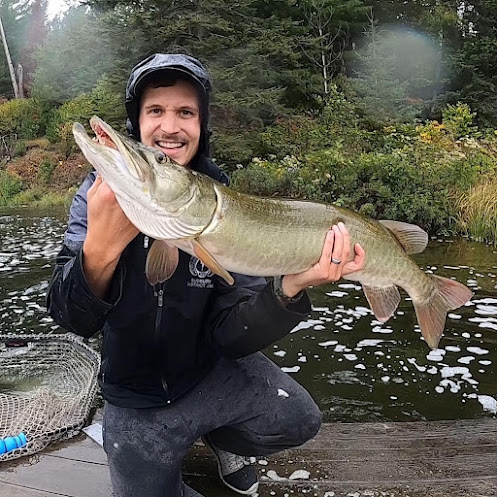 |
| 2022- 40" long |
 |
| 2023- 41" long (1st recapture) |
 |
| 2024- 42.75" long (2nd recapture) |
Follow: @anglingupnorth on Instagram for up-to-date catch pictures!
Attached are the links to my other blog posts:
Canadian Angling Giants:
Welcome to Abyssal Angling:
Ontario Angling Hitlist Chapter 1: Frigid Fishing
2020-2024 Fish Photo Dump:


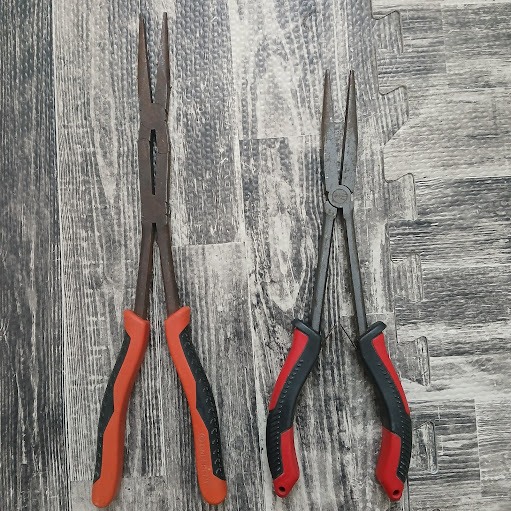

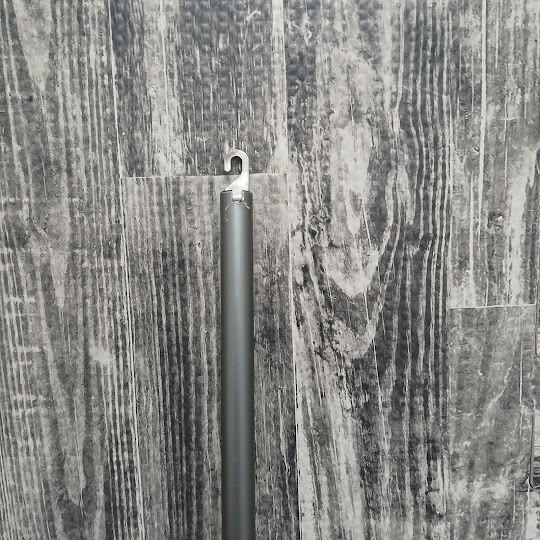












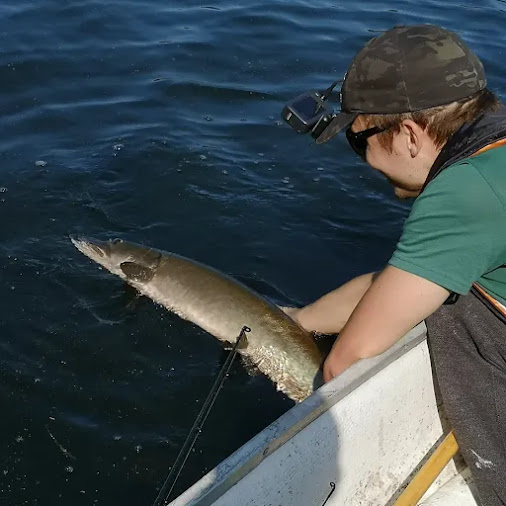

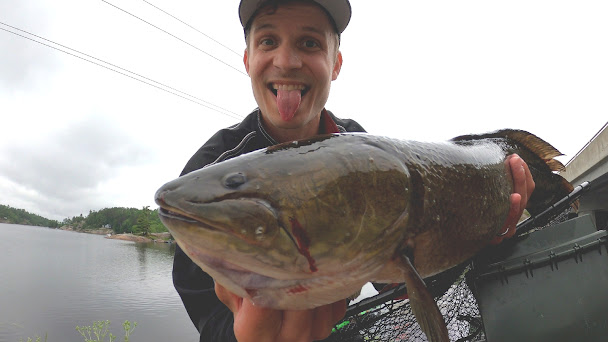
Comments
Post a Comment